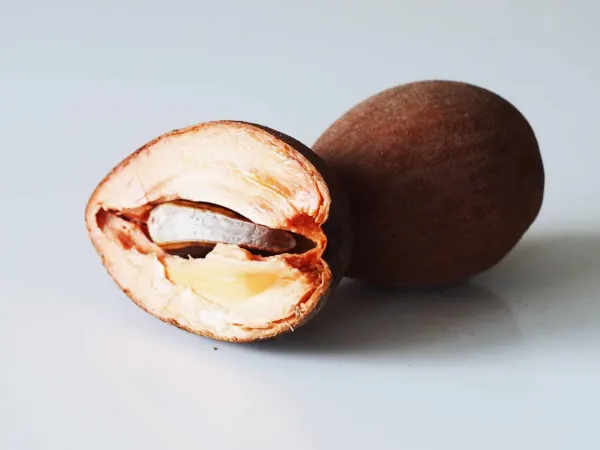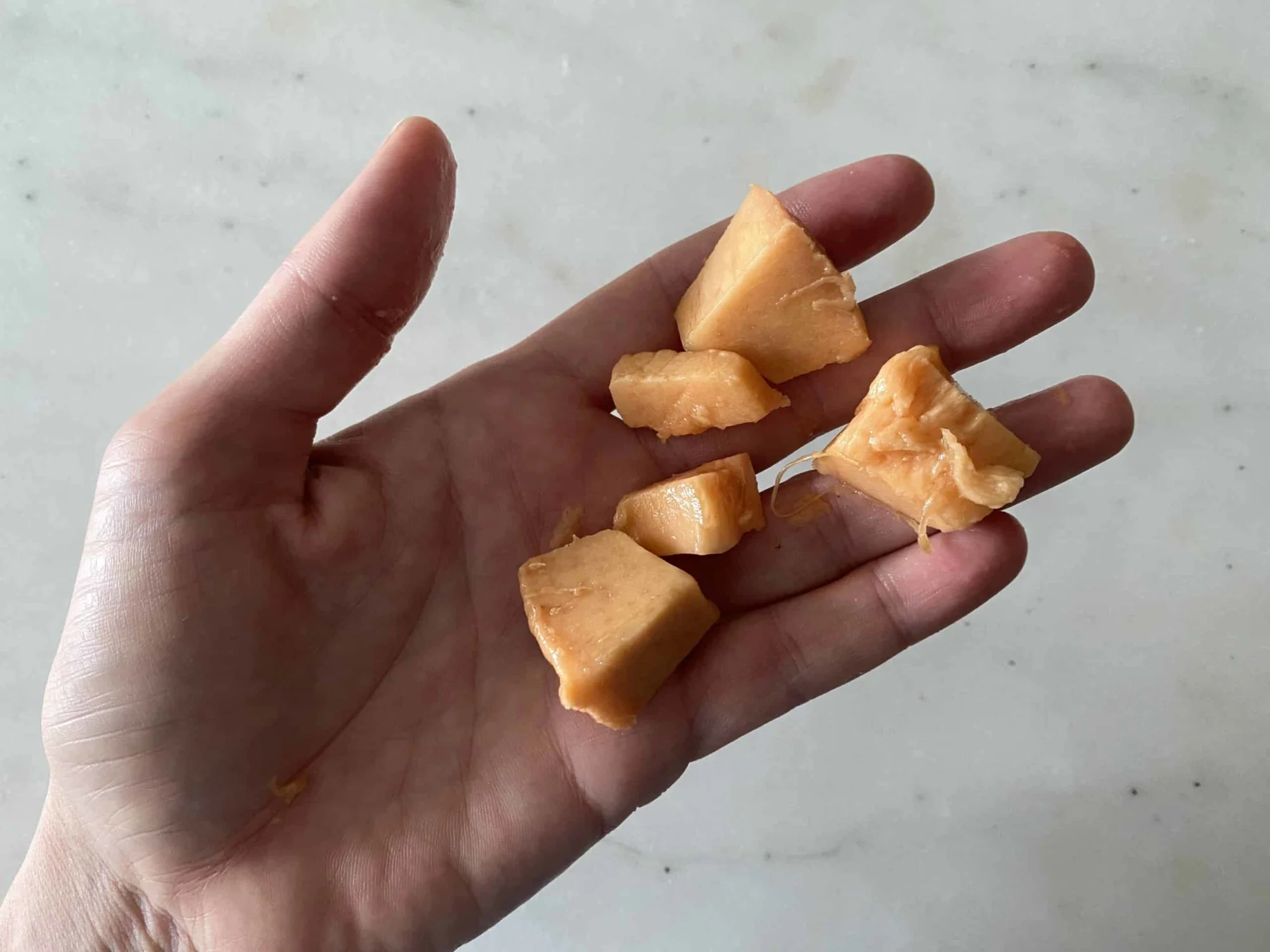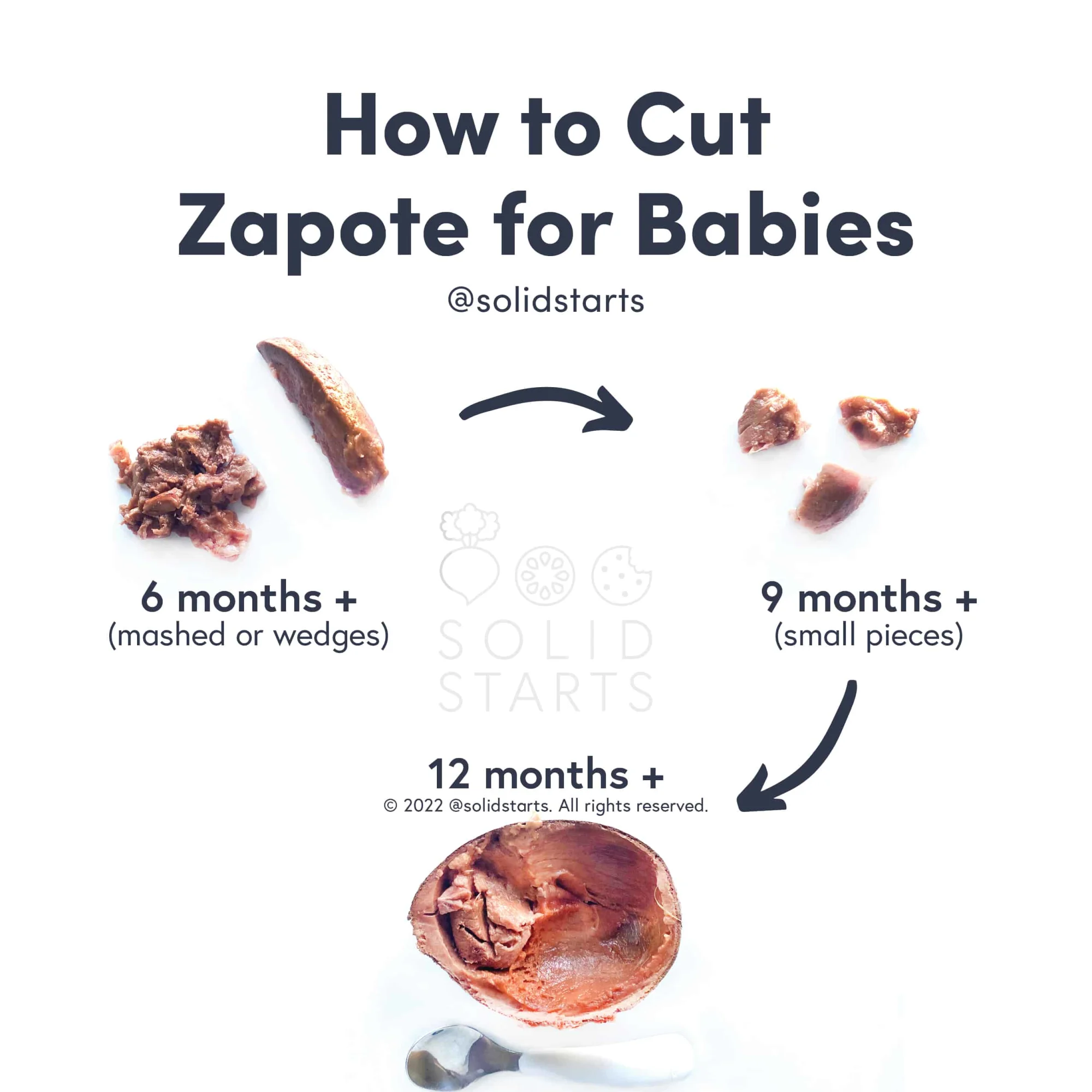Zapote (Mamey Sapote)
Fruit
Age Suggestion
6 months
Iron-Rich
No
Common Allergen
No

When can babies eat zapote?
Zapote can be introduced as soon as baby is ready to start solids, which is generally around 6 months of age.
Where does zapote come from?
Zapote, also known as mamey sapote, originated in Central American rainforests and now grows in tropical areas worldwide. Many different varieties exist today, from the thick, dense Magaña variety to the creamy Pantin. Around the Caribbean, the fruit is known as zapote, a name with roots in the languages of the Nahua and Ben ‘Zaa peoples. Their ancestors learned the zapote tree’s many uses: its wood could be shaped into carvings and structures, its resin made into chewing gum, and its fruits were packed with nutrients and a big seed that could be turned into food and medicine. Ground-up zapote seeds are still used to flavor molé (sauce) and flan (egg custard), but it is the sweet pink flesh of the fruit that is craved across the world today. When ripe, zapote tastes like pumpkin with hints of almond or peach, with a super-soft texture—just like abiu, cainito, canistel, sapodilla, and other fruits in the same plant family.
★ Tip: If you can’t find fresh zapote, look for the pulp in the freezer section of your grocery store. The ripe fruit does not travel well over long distances, so unless you live near an orchard, it may not be easy to find. But frozen zapote pulp is increasingly available, usually labeled as pulpa de zapote or mamey fruit pulp.
Videos
Is zapote healthy for babies?
Yes. The creamy flesh of zapote offers vitamin A, vitamin E, flavonoids, and phenols—powerful antioxidants that promote cellular health by reducing inflammation. Zapote also contains vitamin B6 and omega-3 fatty acids for neurological development and fiber to support digestive health.
While some traditional dishes make use of the zapote seeds, babies should never eat the seed or the skin of zapote because of potential exposure to toxins.
★Tip: Avoid green fruit when selecting zapote at your market. Like an avocado, ripe zapote is firm, feels a little heavy, and yields slightly to fingertip pressure. The fruit does overripen quickly (like avocado) but can be refrigerated for a few days to slow this process or frozen for longer storage.
Is zapote a common choking hazard for babies?
No, if seed and skin are removed, though in theory an individual can choke on any food. To minimize the risk, serve only fully ripe, deseeded zapote flesh. As always, make sure you create a safe eating environment and stay within an arm’s reach of baby during meals. For more information on choking, visit our sections on gagging and choking and familiarize yourself with the list of common choking hazards.
Is zapote a common allergen?
No. Allergies to zapote are rare, though individuals who are allergic to latex may be sensitive to zapote, and irritation may also occur from handling the skin of the fruit. If you are sensitive to rashes from latex, you may wish to minimize prolonged contact with the skin while preparing zapote for your baby.
As you would when introducing any new food, start by offering a small quantity for the first few servings. If there is no adverse reaction, gradually increase the quantity over future meals.
Recommended Guide: Introducing Allergens
Can zapote help baby poop?
Ripe zapote is rich in natural sugars like fructose and fiber which makes it a very poop friendly food. However, it is best to start with small quantities as too much may cause abdominal cramping and bloating, as well as very loose stools.
What are recipe ideas for zapote?
Zapote doesn’t need much: eat the fruit fresh out of hand or mix it into fresh fruit salads with a sprinkle of lime juice and, if you and baby like a little spice, a sprinkle of chile pepper for kick. If you want to step it up a notch, use zapote in batidos (smoothies) and estofados (stews) or blend it to make helado (ice cream) or paletas (ice pops). Zapote tastes delicious with coconut, so try offering the freshly cut fruit or frozen pulp in dishes made with coconut milk, like warm grain cereals, chia seed puddings, or quinoa. You can also use the fresh fruit or pulp to make a marinade or sauce for pulled pork, baked or grilled salmon, or stewed chicken.
How do you introduce zapote to babies with baby-led weaning?
Every baby develops on their own timeline, and the suggestions on how to cut or prepare particular foods are generalizations for a broad audience.
6 to 9 months old:
Peel ripe zapote, remove the seed, then cut its flesh into spears to offer to baby. If baby struggles holding onto the slippery fruit, try rolling the spears in finely ground nut or shredded coconut to help with grip. Alternatively, mix mashed ripe zapote or thawed zapote pulp into warm cereals, yogurt, stewed chicken, pulled pork, or roasted fish.
9 months old and up:
At this age, children develop their pincer grasp (where the thumb and forefinger meet), which enables them to pick up smaller pieces of food. When you see signs of this development, try moving down in size to smaller, bite-sized pieces of ripe zapote. If you prefer, keep serving spears, which offer the chance to practice taking bites and learning how to spit when the bites are too big. If the child struggles holding onto the slippery fruit, try rolling the pieces of zapote in finely ground nut or shredded coconut to help with grip.
15 to 24 months old:
Smoothie time! With its subtle, sweet flavor of peach and pumpkin, zapote is a wonderful base for smoothies. Try mixing it with banana and coconut milk for a tropical treat. Zapote also works well in desserts, though it would be wise to wait until after the second birthday to serve foods with added sugar.


¿Hablas Español? Check out our guides in Spanish here.
Written by
Expert Tips Delivered to Your Inbox
Sign up for weekly tips, recipes and more!
The content offered on SolidStarts.com is for informational purposes only. Solidstarts is not engaged in rendering professional advice, whether medical or otherwise, to individual users or their children or families. No content on this site, regardless of date, should ever be used as a substitute for direct medical advice from your doctor or your medical or health professional, nutritionist, or expert in pediatric feeding and eating. By accessing the content on SolidStarts.com, you acknowledge and agree that you are accepting the responsibility for your child’s health and well-being. In return for providing you with an array of content “baby-led weaning” information, you waive any claims that you or your child may have as a result of utilizing the content on SolidStarts.com.














